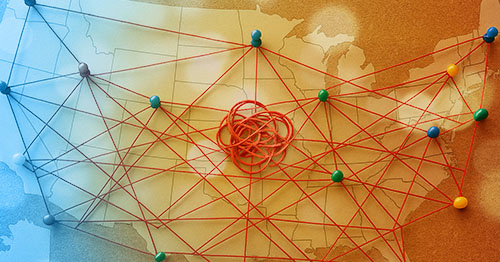
Data Loss Prevention in the Age of AI: A New Landscape Demands New Approaches
July 23, 2025
By:
Summary: Learn how to enhance your approach to data loss prevention with AI in mind, including what capabilities are essential for your organization and how to deploy Microsoft Purview DLP to address your needs. The information provided is based on available features as of the date of publication and is subject to change.
Artificial intelligence is reshaping how we create, use, and move data faster than most organizations can secure it. As employees rely on generative AI tools like ChatGPT, Microsoft 365 Copilot, and other AI assistants, the risk of unintentionally exposing sensitive data has skyrocketed. At the same time, attackers are finding new ways to exploit AI for phishing, exfiltration, and misuse. However, traditional data loss prevention (DLP) tools were not built to handle AI-generated content or constantly shifting cloud environments.
This two-part blog series, and a step-by-step infographic, explore how DLP must evolve in the age of AI: what capabilities are essential and how Microsoft Purview DLP addresses modern challenges.
Why AI demands a rethink of traditional DLP
Legacy DLP systems were designed to prevent accidental leaks via email or USB drives. But they fall short in today’s AI-driven world, where:
- Employees use AI tools to summarize, process, or generate content, sometimes pasting sensitive customer data or intellectual property into prompts.
- AI learns from inputs, and if unprotected data is submitted, it can become part of model training.
- Attackers use AI to craft spear phishing, exfiltrate data, or manipulate employees into data misuse.
- Business data exists everywhere, including AI-generated documents, cloud storage, collaboration tools, and browser-based LLM interfaces.
To protect data in this environment, organizations need AI-aware, cloud-native DLP that goes beyond blocking to understand intent, behavior, and risk.
What modern, AI-ready DLP must deliver
Modern DLP, especially in the context of AI, requires:
- AI-driven classification: Detect sensitive data even in dynamic, unstructured formats like natural language or chat inputs.
- Context-aware enforcement: Understand how, where, and why data is being used (e.g., pasting into ChatGPT vs. sending to a partner).
- AI governance integration: Align DLP with AI usage policies so employees can innovate safely.
- Cross-platform visibility: Monitor endpoints, cloud apps, browsers, and generative tools, not just email or file shares.
How Microsoft Purview DLP meets these challenges
Microsoft Purview DLP is designed for today’s data: powered by AI, connected across cloud platforms, and increasingly decentralized. Here’s how it supports modern AI-centric data protection.
- Unified, AI-infused data classification
- Detects a wide range of sensitive information types, from PII to intellectual property.
- Learns content patterns through trainable classifiers that analyze context and tone rather than relying on keywords.
- Pinpoints and protects structured data with Exact Data Match (EDM) technology.
- Endpoint and browser-based visibility
- Extends DLP to browser sessions, including ChatGPT, Gemini, and Deepseek.
- Controls user actions like copy, paste, uploads, or screen capture on Windows and Mac devices using Endpoint DLP.
- Risk-based adaptive controls
- Adjusts enforcement based on user behavior, device posture, or location.
- Prompts users to justify risky actions, especially when using AI applications.
- Deep integration with Microsoft Security & Compliance Ecosystem
- Aligns with Insider Risk Management (IRM), Communication Compliance, and Microsoft Defender.
- Sends alerts to Microsoft Sentinel or SIEM/SOAR platforms for AI-related anomaly detection.
AI is altering the data landscape, and legacy DLP tools were not designed for this new terrain. Today’s intelligent DLP system must be context-aware and keep pace with how people use and misuse AI and cloud platforms. Microsoft Purview is adapting to meet these challenges. In part two of this series, we will share a step-by-step approach to implementing Purview DLP and highlight how organizations can turn their policies into practices that protect their data and enable the adoption of innovative technologies.
To learn more about how we’re helping organizations improve their data protection, visit our data privacy and security page.








